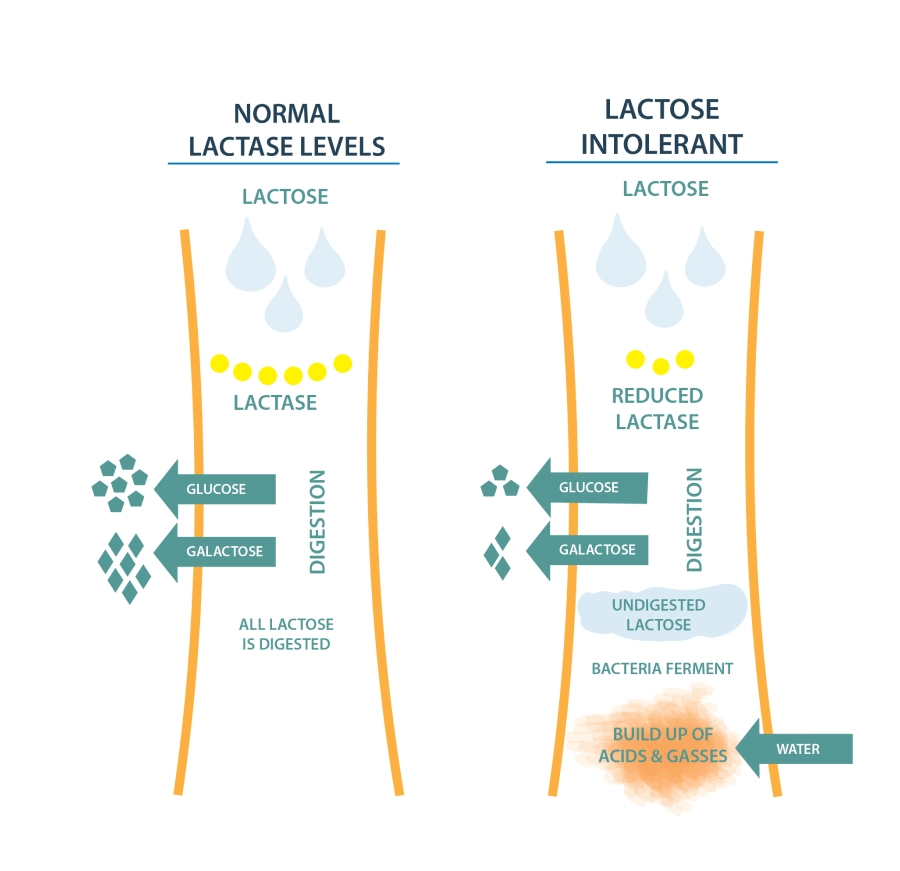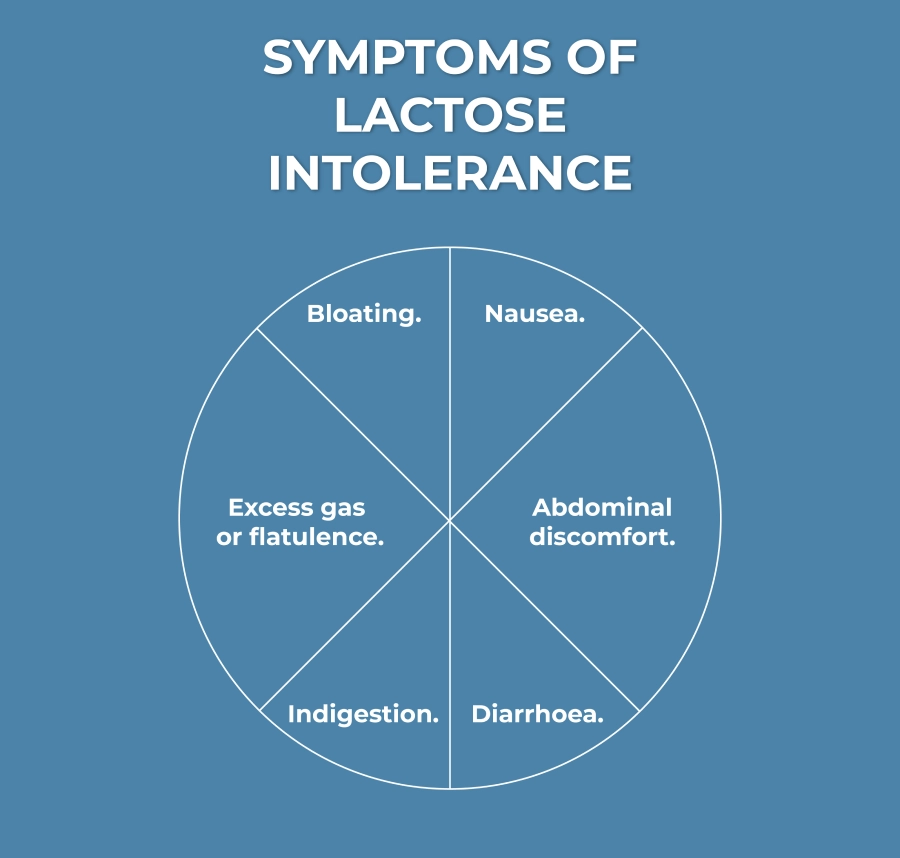68 percent of the worlds population has lactose malabsorption
Lactose intolerance is the most common food intolerance in Australia. So, what exactly is the meaning of lactose intolerance? It is caused by lactose malabsorption, which occurs when the body does not have enough lactase digestive enzymes to fully break down the lactose in dairy during digestion, a condition also known as lactase deficiency.
Lactose Intolerance describes the symptoms that occur due to lactose malabsorption. It may also be called digestive lactose overload or hypolactasia. To define lactose intolerance: it is the inability to digest lactose properly due to a deficiency in lactase enzymes.
Lactose is a complex sugar (disaccharide) found in all dairy products. Lactase is the digestive enzyme which breaks lactose down into simple milk sugars (monosaccharides) glucose and galactose which can then be absorbed by the body.
The level of lactase enzymes manufactured in the body varies between individuals. A deficiency leads to the symptoms of lactose intolerance as the lactose moves undigested into the colon instead of being processed and absorbed. The undigested lactose is fermented by normal bacteria in the colon, producing lactic acid and hydrogen gas. This fermentation process is what causes the common symptoms of lactose intolerance.

Symptoms of lactose intolerance
The most common symptoms or signs of lactose intolerance are excess bloating, flatulence, digestive discomfort, and diarrhoea.
Symptoms of lactose intolerance can vary in intensity from very mild to debilitating, depending on the amount of lactase enzymes produced in the body and the amount of lactose consumed. People with very low levels of lactase enzymes may react to trace amounts of lactose such as the coating on a pill, while others may be able to tolerate reasonable amounts of dairy before showing symptoms.
Lactose intolerance symptoms usually develop about 20 minutes to 2 hours after consuming lactose but may be delayed as the amount of undigested lactose in the gut accumulates.
It is extremely rare for lactase enzymes to be totally absent from the body – most people can tolerate small amounts of dairy. However, intake beyond this threshold causes symptoms.

Diagnosis
For many people the link between dairy intolerance symptoms and eating dairy is obvious, for others further investigations are necessary to eliminate other potential causes.
If you suspect you may have a milk allergy we strongly recommend that you avoid dairy altogether until you have seen a medical practitioner.
There is a simple test to help determine whether you are lactose intolerant – compare your symptoms with and without Lacteeze. If your symptoms are reduced or eliminated after taking Lacteeze, which acts like a medication for lactose intolerance, then you can be sure you are lactose intolerant.
If you are still unsure of the cause of your symptoms, then keeping a food diary listing what you eat and any symptoms may help. Alternatively, your doctor can organise one of the following tests for you:
HYDROGEN BREATH TEST
This is the most common medical test for lactose intolerance and is the most accurate. It measures the levels of hydrogen excreted in your breath after drinking a liquid high in lactose. This test is not usually performed on babies and infants as it can cause severe diarrhoea.
BLOOD TESTS
This involves several blood tests to measure your blood sugar levels after consuming a strong lactose mixture.
Again, this test is not usually performed on babies and infants as it can cause severe diarrhoea.
STOOL ACIDITY TEST
For infants and young children, lactose intolerance may be diagnosed by measuring the amount of acid in a stool sample.








